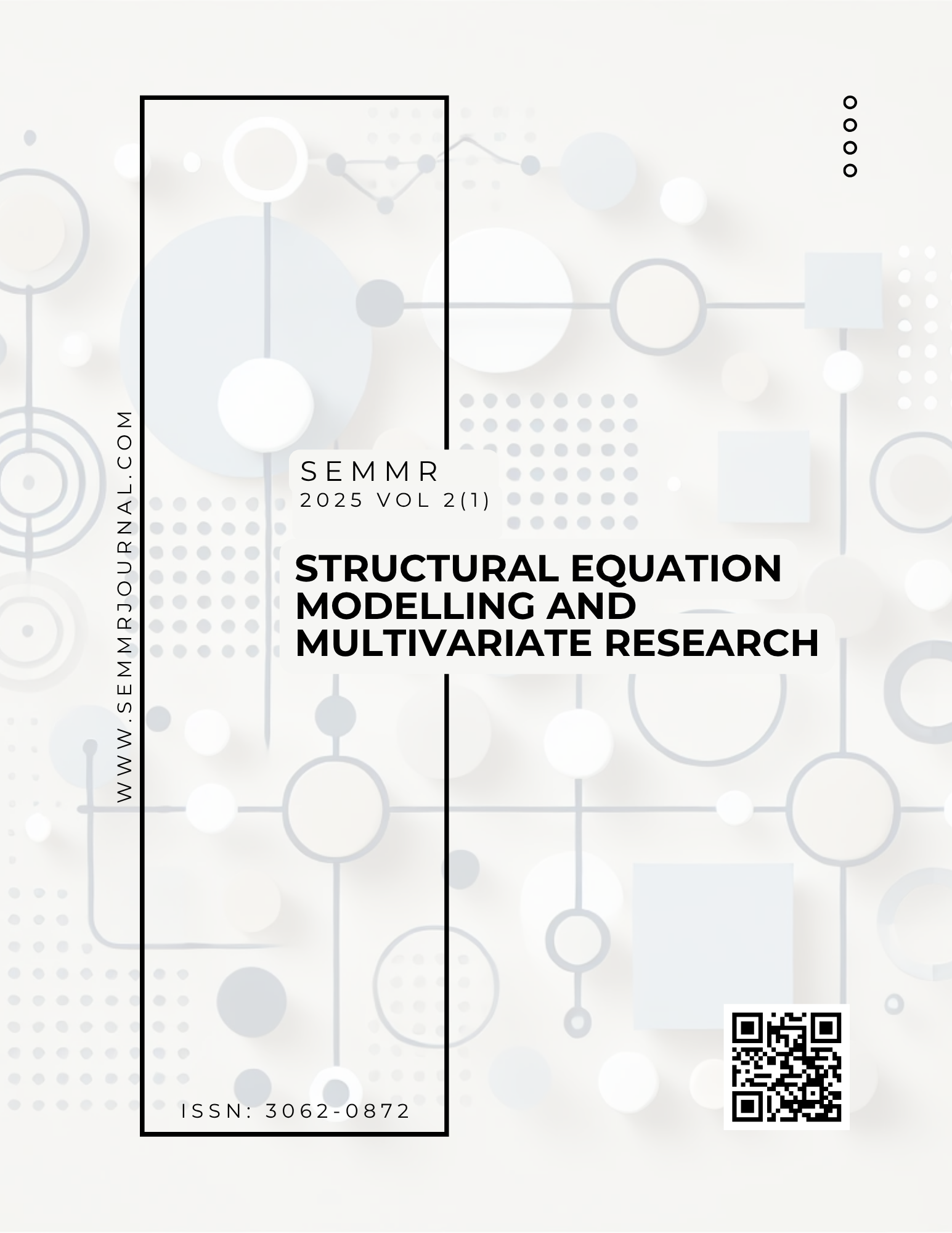Investigating The Factors Influencing the Adoption of Artificial Intelligence in Higher Education Using Pls-Sem: The Case of Chatgpt
DOI:
https://doi.org/10.5281/zenodo.15745146Keywords:
ChatGPT, Artificial Intelligence, Higher Education, Technology Adoption, PLS-SEMAbstract
In recent years, the increasing use of artificial intelligence technologies in education has fundamentally transformed teaching methods and reshaped the ways in which students learn. One of the prominent tools in this transformation is ChatGPT, developed by OpenAI, which stands out for its support of individualized learning processes in higher education. However, there is limited knowledge and research regarding the factors influencing the adoption of ChatGPT in higher education. This study aims to analyze the individual and cognitive factors affecting the adoption of ChatGPT by employing Partial Least Squares Structural Equation Modeling (PLS-SEM). In the research model, relatedness, autonomy support, creative inspiration, and credibility are considered as independent variables; engagement in learning and perceived competence as mediating variables; and behavioral intention as the dependent variable. The research model and hypotheses were tested based on data collected from 141 participants currently enrolled in higher education. The findings revealed that perceived competence (PE.CO) had the strongest direct impact on behavioral intention (BE.IN), while engagement in learning (LE.EN) did not significantly influence behavioral intention. Moreover, creative inspiration (CR.IN) and credibility (TRUST) had significant indirect effects on behavioral intention through perceived competence, highlighting the importance of self-efficacy and trust in the adoption of AI-based educational technologies. However, relatedness (RELA) and autonomy support (AU.SU) did not demonstrate significant direct effects on behavioral intention. The findings aim to contribute to the theoretical framework surrounding the adoption of AI-based educational technologies and to offer practical insights for practitioners.
Downloads
References
Abu-Taleb, S. K., & Nilsson, F. (2021). Impact of social media on investment decision: A quantitative study which considers information online, online community behaviour, and firm image. Department of Business Administration International Business Program Bachelor Thesis.
Ajzen, I. (1991). The theory of planned behavior. Organizational Behavior and Human Decision Processes, 50(2), 179-211. https://doi.org/10.1016/0749-5978(91)90020-T
Akhter, S., ve Alam, P. (2001). Information acquisition and investment decisions on the internet: An empirical investigation. Marketing Management Journal, 11(1), 94–100.
Alfaisal, R., Hatem, M., Salloum, A., Al Saidat, M. R., & Salloum, S. A. (2024). Forecasting the acceptance of ChatGPT as educational platforms: An integrated SEM-ANN methodology. In Studies in Big Data (Vol. 144, pp. 331–348). Springer. https://doi.org/10.1007/978-3-031-52280-2_21
Balaskas, S., Tsiantos, V., Chatzifotiou, S., & Rigou, M. (2025). Determinants of ChatGPT adoption intention in higher education: expanding on TAM with the mediating roles of trust and risk. Information, 16(2), 82. https://doi.org/10.3390/info16020082
Bandura, A. (1997). Self-efficacy: The exercise of control. W. H. Freeman.
Bickart, B., & Schindler, R. M. (2001). Internet forums as influential sources of consumer information. Journal of Interactive Marketing, 15(3), 31–40.
Davis, F. D. (1989). Perceived usefulness, perceived ease of use, and user acceptance of information technology. MIS Quarterly, 13(3), 319-340. https://doi.org/10.2307/249008
Davis, F. D. (1993). User acceptance of computer technology: System characteristics, user perceptions. International Journal of Man-Machine Studies, 38(3), 475-487.
Foroughi, B., Iranmanesh, M., Ghobakhloo, M., Senali, M. G., Annamalai, N., Naghmeh-Abbaspour, B., & Rejeb, A. (2024). Determinants of ChatGPT adoption among students in higher education: The moderating effect of trust. The Electronic Library, 42(1), 33-49. https://doi.org/10.1108/EL-12-2023-0293
Fornell, C., & Larcker, D. F. (1981). Evaluating structural equation models with unobservable variables and measurement error. Journal of Marketing Research, 18, 39-50. https://doi.org/10.2307/3151312
Gomez, E., Heflin, F., Moon, J., & Warren, J. (2022). Financial analysis on social media and disclosure processing costs: Evidence from Seeking Alpha. Georgia Tech Scheller College of Business Research Paper No. 18-45.
Gürbüz, H., & Yılmaz, V. (2023). Üniversite öğrencilerinin yatırım davranışları: Bir yapısal model önerisi. Paper presented at the 3rd International Black Sea Modern Scientific Research Congress, March 23–24, Samsun, Türkiye.
Hair, J. F., Hult, G. T. M., Ringle, C. M., & Sarstedt, M. (2017). A primer on partial least squares structural equation modeling (PLS-SEM) (2rd ed.). Sage Publications.
Hair, Jr., J. F., Anderson, R. E., Tatham, R. L. ve Black, W. C. (1998). Multivariate data analysis. (5th ed). Upper Saddle River, NJ: Prentice Hall.
Hair, J. F., Ringle, C. M. ve Sarstedt, M. (2011). Pls-sem: Indeed a silver bullet. Journal of Marketing theory and Practice, 19(2), 139-152.
Henseler, J., Ringle, C. M., & Sarstedt, M. (2015). A new criterion for assessing discriminant validity in variance-based structural equation modelling. Journal of the Academy of Marketing Science, 43, 115–135.
Hu, L. T., & Bentler, P. M. (1999). Cutoff criteria for fit indexes in covariance structure analysis: Conventional criteria versus new alternatives. Structural Equation Modeling, 6(1), 1–55.
Karasar, N. (2002). Bilimsel araştırma yöntemi (11. baskı). Nobel Yayın Dağıtım.
McKnight, D. H., Choudhury, V., & Kacmar, C. (2002). Developing and validating trust measures for e-commerce: An integrative typology. Information Systems Research, 13(3), 334-359. https://doi.org/10.1287/isre.13.3.334.81
Nguyen, T. N. T., Lai, N. V., & Nguyen, Q. T. (2023). Artificial intelligence in education: A case study on ChatGPT's influence on student learning behaviors. Journal of Educational Technology & Society, 26(1), 15–29. DOI:10.22521/edupij.2024.132.7
Özerbaş, M. A. (2011). Yaratıcı düşünme öğrenme ortamının akademik başarı ve bilgilerin kalıcılığa etkisi. Gazi Üniversitesi Gazi Eğitim Fakültesi Dergisi, 31(3), 675–705.
Polyportis, A., & Pahos, N. (2023). Understanding students’ adoption of the ChatGPT chatbot in higher education: The role of anthropomorphism, trust, design novelty and institutional policy. Education and Information Technologies, 28(2), 2345-2367. https://doi.org/10.1080/0144929X.2024.2317364
Ryan, R. M., & Deci, E. L. (2000). Self-determination theory and the facilitation of intrinsic motivation, social development, and well-being. American Psychologist, 55(1), 68-78. https://doi.org/10.1037/0003-066X.55.1.68
Shahzad, M. F., Xu, S., & Javed, I. (2024). ChatGPT awareness, acceptance, and adoption in higher education: The role of trust as a cornerstone. International Journal of Educational Technology in Higher Education, 21, Article 46. https://doi.org/10.1186/s41239-024-00478-x
Tenenhaus, M., Amato, S. ve Esposito Vinzi, V. (2004). A global goodness-of-ft index for PLS structural equation modeling. In: Proceedings of the XLII SIS Scientifc Meeting. Padova: CLEUP, 739–742.
Tiwari, S. P., et al. (2023). What drives students toward ChatGPT? An investigation of the factors influencing adoption and usage of ChatGPT. Journal of Educational Technology Research and Development. DOI:10.1108/ITSE-04-2023-0061
Topçuoğlu, Y. H., Yılmaz, V. ve Arı, E. (2022). Ortak paylaşımlı e-scooter kullanımının kısmi en küçük kareler yapısal eşitlik modellemesiyle araştırılması, Erciyes Üniversitesi İktisadi ve İdari Bilimler Fakültesi Dergisi, https://doi.org/10.18070/erciyesiibd.1112977
Venkatesh, V., & Davis, F. D. (2000). A theoretical extension of the technology acceptance model: Four longitudinal field studies. Management Science, 46(2), 186-204
Venkatesh, V., Morris, M. G., Davis, G. B., & Davis, F. D. (2003). User acceptance of information technology: Toward a unified view. MIS Quarterly, 27(3), 425-478. https://doi.org/10.2307/30036540
Wang, S., Wang, J., Yang, S., Li, J., Zhou, K. (2020). From intention to behavior: Comprehending residents’ waste sorting intention and behavior formation process. Waste Management, 113, 41-50.
Yılmaz, V. , Altın, M., Arı, E., (2023). Evsel atık ayırma davranışlarının araştırılması: Genişletilmiş atık ayırma modeli, Ankara Hacı Bayram Veli Üniversitesi İktisadi ve İdari Bilimler Fakültesi Dergisi 25/2, DOI: 10.26745/ahbvuibfd.1233576
Yılmaz, V. ve Kinaş, Y. (2020). Kısmi en küçük kareler yapısal eşitlik modellemesiyle bir elektrik dağıtım şirketinin hizmet kalitesinin araştırılması. Eskişehir Osmangazi Üniversitesi İktisadi ve İdari Bilimler Dergisi, 15(2), 437-456.
Zhang, B. (2023). Preparing educators and students for ChatGPT and AI technology in higher education: Benefits, limitations, strategies, and implications of ChatGPT & AI technologies. Journal of Educational Computing Research, 61(4), 875-899. DOI:10.13140/RG.2.2.32105.98404
Downloads
Published
How to Cite
Issue
Section
License
Copyright (c) 2025 Ezgi Gümre

This work is licensed under a Creative Commons Attribution 4.0 International License.




